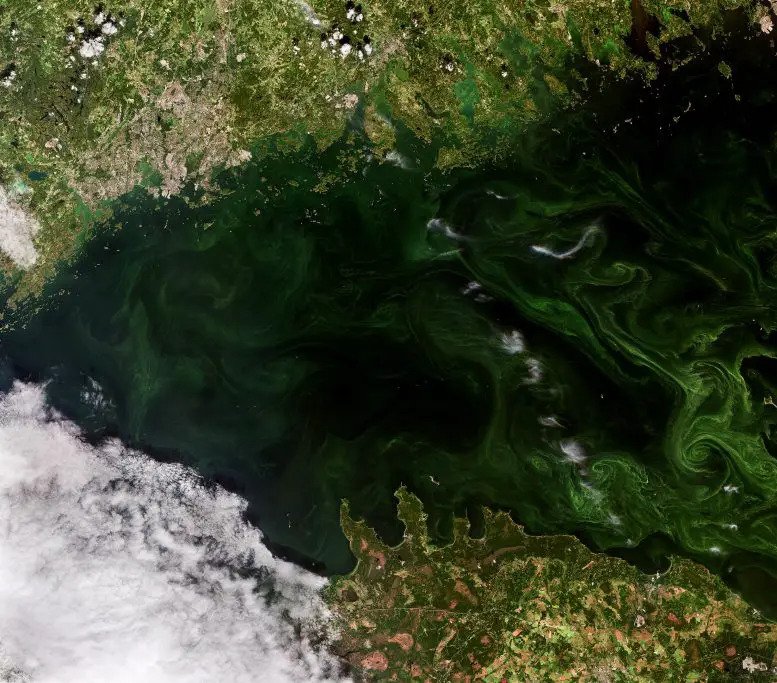The Sentinel-2 satellite saw amazing green whirlpools in the Gulf of Finland of the Baltic Sea. They are caused by the reproduction of phytoplankton — tiny algae living in the upper layer of water.

Green whirlpools
Scientists studying the earth’s oceans with the help of satellites are very closely watching their color. After all, it can indicate climatic changes or the change of river outflows. Two researchers at one time even turned the color of individual sections of the sea into music.
However, this time the Sentinel-2 satellite saw something really amazing in the Gulf of Finland of the Baltic Sea. Its surface was covered with whirlpools of a beautiful emerald color. This phenomenon was observed south of the capital of Finland, Helsinki.
Although the green whirlpools look mysterious, scientists are not seeing this phenomenon for the first time. They are caused by the proliferation of phytoplankton — tiny algae that live in the upper layer of seawater. By the end of summer and the beginning of autumn, its rapid development comes, and the sea waves spread it, forming amazing whirlpools.
What does the excessive spread of algae indicate
Phytoplankton is an important component of the biosphere of the oceans. It is the basis of the food chains from them, as it determines the life of all other living organisms in it. In addition, it absorbs a large amount of carbon dioxide, which ensures the normal functioning of the atmosphere and climate.
However, sometimes it can emit a large amount of toxic substances, and when it dies massively after rapid reproduction, it decomposes and does not allow living organisms to breathe. Therefore, climate change can affect algae in a particularly catastrophic way.
Too warm months, such as this summer, create too comfortable conditions for phytoplankton, which multiplies, filling the entire space. And later, when the green whirlpools turn brown, it can be accompanied by the mass death of living beings.
According to scitechdaily.com
Follow us on Twitter to get the most interesting space news in time
https://twitter.com/ust_magazine
